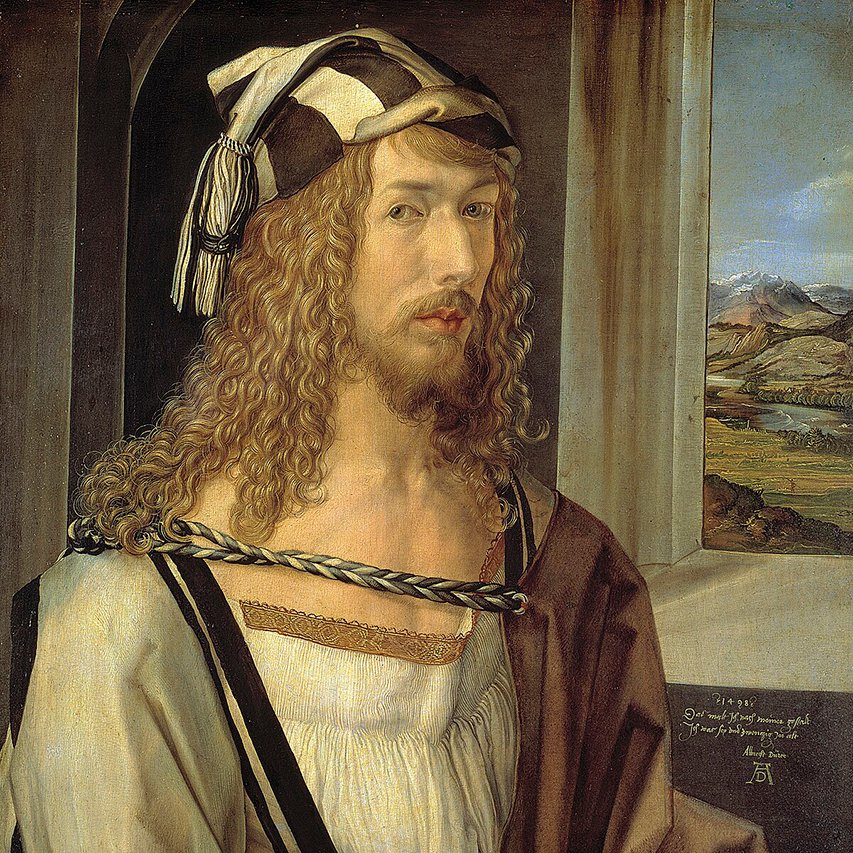Description
Along with St Jerome in his study and the Melancholia, the Rider, as Dürer himself described this print, is one of three so-called master engravings (Meisterstiche) produced by Dürer over the space of around a year between 1513 and 1514. Each of these was engraved on a plate of a similarly large size and all demonstrated Dürer’s ability to create a range of effects with the burin (the tool with which a plate is engraved). Although various theories have been advanced, there is no evidence that Dürer himself regarded the three Meisterstiche as a set – the diary of his journey to the Netherlands shows that he gave them away separately rather than together, or paired St Jerome with the Melancholia but without the Knight.
Dürer used a number of sources in his composition, among them a drawing of a mounted knight he had made 15 years earlier and studies of a dog and the proportions of a horse. It has been suggested that the pose of the knight was inspired by equestrian statues in Italy, particularly the monument commemorating Bartolommeo Colleoni, which Dürer must have seen during his stay in Venice, c.1505-7. Certainly the pose of the horse, the decoration on its poll and the sallet helmet worn by the knight are very close to the Colleoni statue, which was erected in 1494. Dürer may also have seen Donatello’s 1453 equestrian monument to the condotierre Gattamelata (Erasmo of Narni) in nearby Padua, and he may well have known, directly or through copies, studies by Leonardo da Vinci for the equestrian monument to Francesco Sforza (on which Leonardo was working around 1490).





